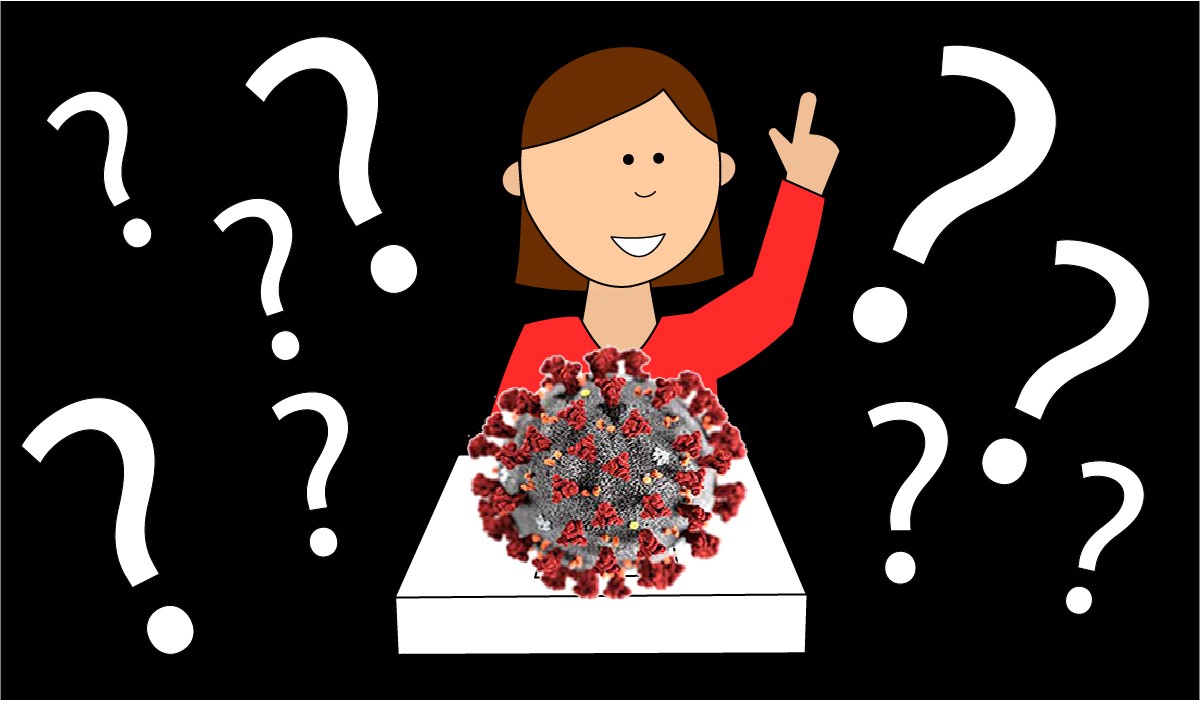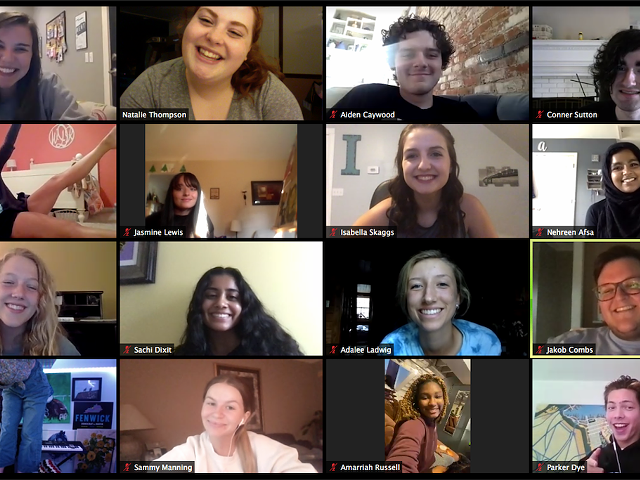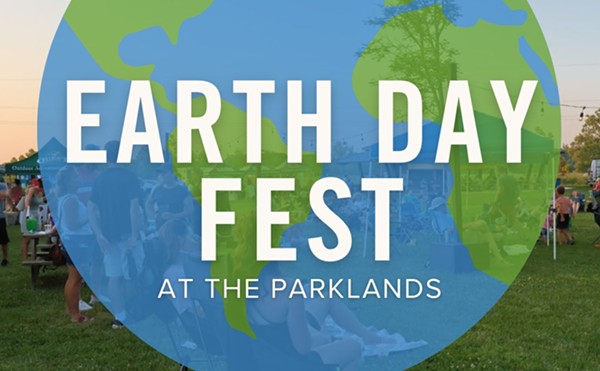I have questions about the pandemic. I bet you do, too. You might also think that you can get those answers with a simple Google search. Alas, we cannot. Blame it on propaganda, sophisticated campaigns of misinformation, the pace of the disease itself or old-fashioned American ignorance, but internet oracles aren’t going to give us any reliable information.
What we can do, however, is ask someone who knows. Dr. Ana Bento knows. She’s a professor of epidemiology and biostatistics at Indiana University. She’s been all over the world studying bacterial and viral illnesses of all kinds, including COVID-19. She knows more about infectious diseases than you, me and everyone we know put together, even if we could somehow mash all of our gray matter into one giant, gross-looking superbrain. I asked her some of the most common questions asked by, well…me. You’ll probably want to hear her answers, too.
DAN: How much longer are we going to have to do this, do you figure? Will it be different in Indiana/Kentucky than anywhere else in the U.S.? Would you expect to see tighter restrictions — shelter in place, etc., before the end of the year? DR. BENTO: The short answer is: It’s not going to go away anytime soon. There is certainly no indication we should expect it to go away in the coming months. There is no reason to expect it to be different in Indiana or Kentucky, either. Tighter restrictions may well be on the horizon, especially if schools reopen with in-person instruction. This can lead to “sparks” of cases in communities that so far have experienced a lighter burden. With increased testing, we should expect to catch more infections, and in particular catching asymptomatics, thereby averting new infections by “breaking” chains of transmission. But this is far from over.
So, like, months? Or years? Possibly years. The most likely case is where infection rates rise and fall over time; as we relax social distancing measures when numbers of infections fall, and then may need to re-implement these measures as numbers increase again. Prolonged effort will be required to prevent major outbreaks until a vaccine is developed. But it is unlikely in the long term to have the explosive spread that we are seeing right now because much of the population will be immune in the future.
How are we supposed to convince our friends and family that this is real, or should we even waste energy on that at this point? Seems like people are gonna do what they're gonna do regardless of what health experts say. Unfortunately, compliance to COVID-19 mitigation and social-distancing strategies have become a polarizing subject like religion and politics. The idea of “believing” in COVID-19 is nonsense, but it is actually something we epidemiologists and public health stakeholders have to consider when educating the public. And no, it’s not pointless. We have to keep bombarding people with the same message: test, social distance wear a mask, wash your hands. Think about your safety but most importantly think about others. This is not a “me” problem it is a global problem.
To that point, how much damage can mamaw and papaw really do if they decide to go to the Kroger once a week without masking up? Especially if they're in rural areas? Is it possible that we city folk are overreacting? No, we are not overreacting. Yes, there are hotspots of COVID-19 transmission, and we know this form early epidemics in bigger cities that are more populated, but most importantly are more connected. The issue with thinking that rural areas are safe is that while it is likely that it has taken longer for COVID-19 to get to more isolated regions, we have to assume it is pretty much everywhere. Also, in isolated regions, access to healthcare is harder so the more reason to be extra cautious. All in all, we have to be mindful of our behavior anytime there are people around us.
Dr. Anthony Fauci says he's optimistic we could have a vaccine by the end of the year. Are you? Can you sort of give us an overview of the science and politics involved in making a vaccine happen? We could have a vaccine by the end of the year. However, we need to get it past safety checks and ready to be mass produced, which means it won’t be available. We know that Russia has announced they now have a “good vaccine” and that it will be ready for mass production soon, but they haven’t reported what steps they took to get it ready for humans. Russia's mysterious approval of a COVID-19 vaccine is the opposite of how we want this process to play out in the US. We need transparency. We need high regulatory standards. We need confidence that the product is safe and effective. Before it gets into production there needs to be several safety and efficacy trials. These start with mice, primate, or ferrets testing, and then there are three “phase trials.”
Phase 1 trial: If those animal studies turn out well, scientists will enlist a few dozen volunteers to get the experimental vaccine.
Phase 2 trial: If Phase 1 trials do not turn up serious safety problems, then researchers usually start injecting hundreds of people and making more detailed observations. In the Phase 2 trials conducted so far, they have only detected mild or moderate symptoms and no severe side effects. Volunteers have also produced antibodies to the coronavirus, in some cases more than are produced by people who have recovered from an infection. So this is promising.
Phase 3 trials are large, randomized control trials, in which researchers give the vaccine or a placebo to tens of thousands of people and wait for them to encounter the virus in the real world. Along with determining whether the vaccine protects people, Phase 3 trials can reveal uncommon side effects that may not have shown up in the comparatively small number of volunteers who enrolled in the earlier phases. By comparing large groups of people who received the vaccine versus the placebo, researchers can identify unusual clusters of cases in the vaccinated participants.
Outside experts then evaluate the data from Phase 3 trials and give their recommendation to the FDA, which then decides whether to approve a vaccine for widespread use. And even after a vaccine is licensed, researchers still keep an eye on it to make sure it’s safe. Only after being licensed can it start being produced in large scale.
It is unlikely that the Russian vaccine went through phase 3.
Isn't the damn thing mutating too much for a reliable vaccine anyway? This virus is not mutating more than what we would expect.
If one is successfully developed, how long before it gets to Indiana? When one becomes available, how quickly it gets to Indiana (or to any other state) will depend on production and deployment logistics. So, I don’t have an answer for that. In fact, no one has an answer yet.
Is there any way that a state that cared about its citizens could protect them from states who obviously don't? In other words, if I'm the governor of Kentucky, how do I keep my constituents safe from, let's say, Tennesseans? I know there are nominal quarantine orders in place in some states, but since our borders are so porous, doesn't any solution have to be implemented at the federal level? The restrictions we see in New York and New Jersey make sense in theory, but as you say very well it is nontrivial to implement given open borders.
Did I say that? Anyway, the best way to protect everyone is to educate the population and create ways to protect everyone in particular populations at higher risk. We know that COVID-19 is impacting specific communities. I’m not well versed in federal law, but from an epidemiological point of view, concerted efforts need to be implemented. This does not mean blanket policies for all states; in fact we need the opposite. We need bespoke policies to protect certain communities, for instance the ones that can’t stay at home and work from home.
“Bespoke policies?” I had to look that up. What would those look like? Some communities have to shelter in place, some don’t? Yes, that is exactly it. Or a variation of that. We can think of other things, such as intermittent policies, where we mix up who stays at home, create “shifts,” introduce safe commutes, or change the way we work.
As I understand it, we're seeing a resurgence in Europe, where they've been doing things right (or at least better than us). Doesn't that mean we are kinda screwed, no matter what? Even assuming we got it together and took all the precautionary measures we could, isn't it likely to just come roaring back when we try to reopen? In epidemiology the basic concept is “R0” (r nought) which pertains to how many individuals an index case can infect on average. This is oversimplified but it is a good concept to understand how epidemics take off. To make sure an epidemic gets controlled we aim during its evolution to get it to below 1, meaning that one infectious individual will infect on average less than 1, hence the infection is expected to eventually die out. During an epidemic, “R0” is referred to as “Rt,” effective reproductive number, as it varies in time.
However, we must remember that because we aren’t testing everyone and often tests are taking weeks, there is a lag in understanding how big it is -- and also we aren’t catching many infections. What we see is the tip of the iceberg. “Rt” might be close to 1 but flirting around the threshold. Even in countries where apparently things are under control, (New Zealand, South Korea, some European countries) we have to be vigilant and not relax measures in such way that the unseen, underlying transmission gets back up.
Since we don’t have a vaccine or treatments, we know that the only thing we can do to reduce infection rates is to practice tried-and-tested social distancing. The main thing for is to educate people that until we have enough people protected with an effective vaccine going back to old socializing is naïve and irresponsible. We need to focus on a new normal.
So…yes? No, we aren’t screwed. We just need to realize that we need to change our lifestyle and the way we mix with others. What we were doing before pandemic doesn’t work for our new reality. So, if it’s broken, we fix it, right? “Insanity is doing the same thing over and over again and expecting different results” someone said (not Einstein). Also remember that the vaccine is not a panacea. So even when it’s here we might still have to abide by some of these social changes and keep testing as many people and as often as possible.
What about the herd immunity thing? Is that real? That’s kind of been Sweden’s approach, right? How’s that supposed to work, and is it actually working? Yes, it’s definitely a real thing. When most of a population is immune to an infectious disease, this provides indirect protection—or herd immunity (also called herd protection)—to those who are not immune to the disease. For example, if 80% of a population is immune to a virus, eight out of every 10 people who encounter someone with the disease won’t get sick (and won’t spread the disease any further). In this way, the spread of infectious diseases is kept under control. So, following up on our Rt conversation, if we take the simplest model of population immunity, we expect Rt will equal R0 ? fraction of the population susceptible (meaning individuals who have not been exposed to COVID-19). If we assume R0 of 2.5 then we need 60% of the population immune to reach herd immunity. In the worst case (for example, if we do not practice physical distancing or enact other measures to slow the spread of SARS-CoV-2 (the name of the virus responsible for COVID-19)), the virus can infect this many people in a matter of a few months.
Huh? In short, to establish herd immunity in this country, it would take hundreds of millions of Americans getting infected with SARS-CoV-2.
Oh. Well, why not do that, then? Why is getting infected with the virus to “get it over with” and achieve herd immunity not a good idea? With some other diseases, such as chickenpox before the varicella vaccine was developed, people sometimes exposed themselves intentionally as a way of achieving immunity. For less severe diseases, this approach might be reasonable. But the situation for SARS-CoV-2 is very different: COVID-19 carries a much higher risk of severe disease and even death.
The death rate for COVID-19 is unknown, but current data suggest it is 10 times higher than for the flu. It’s higher still among vulnerable groups like the elderly and people with weakened immune systems. Even if the same number of people ultimately get infected with SARS-CoV-2, it’s best to space those infections over time to avoid overwhelming our doctors and hospitals. Quicker is not always better, as we have seen in previous epidemics with high mortality rates, such as the 1918 Flu pandemic.
If you could make government officials listen to you, a scientist who actually knows stuff, what would you have them do to beat this thing? If I could reach directly at the powers at be, I would say: Please pay attention to Dr Fauci and the infectious disease community (medical doctors and epidemiologists). The answers are boring, and the strategies are not sexy, but they work until we find a vaccine that is safe and effective. Even then, because of all the logistics of vaccination, we will need to recalibrate how we interact with each other.?






